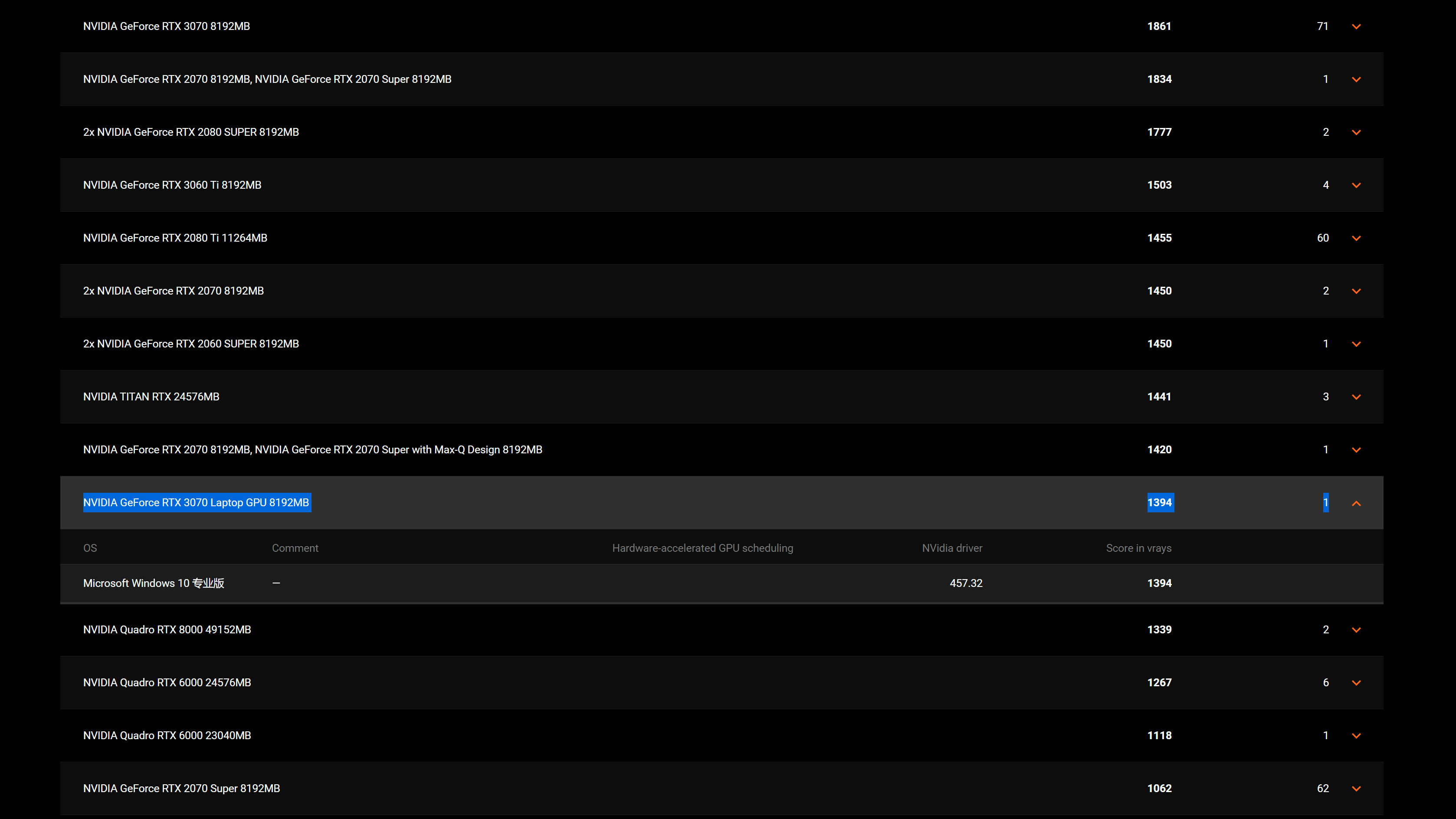
The hardware world is still waiting for Nvidia to announce the mobile version of its GeForce RTX 30-series of graphics cards. In the meantime, a V-Ray 5 benchmark of what appears to be a GeForce RTX 3070 Mobile (via VideoCardz) has popped up, giving us a potential hint of Ampere's ray tracing prowess in mobile form.
Sadly, the submission doesn't tell us a lot about the GeForce RTX 3070 Mobile. It only reports the graphics card's 8GB of memory, which we expect to be the GDDR6 type found on the desktop GeForce RTX 3070.
Before we get into the results, it's worth noting that we should take the V-Ray 5 results with a grain of salt, since they're of an unreleased card. Additionally, ray tracing isn't the most important metric for gamers.

For background, the GeForce RTX 3060 Ti has 38 second-generation RT cores for ray tracing workloads. The GeForce RTX 2080 Ti, on the other hand, flaunts 68 RT cores, but these are first-generation versions so the performance isn't as good. The GeForce RTX 3070 Mobile will likely inherit the 46 RT cores from its desktop counterpart.
It seems that the GeForce RTX 3060 Ti was only up to 7.81% faster than the GeForce RTX 3070 Mobile. Keep in mind that the GeForce RTX 3060 Ti is a desktop graphics card and a 200W one at that, so it's expected to outperform a GeForce RTX 3070 Mobile.
The margin is even smaller when comparing the reported GeForce RTX 3070 Mobile and GeForce RTX 2080 Ti. The previous Turing flagship delivered around 4.4% higher ray tracing performance.
Nvidia's current shortage struggles with Ampere could be why the chipmaker is taking so long to launch the mobile parts. Nonetheless, some retailers have already listed unannounced gaming laptops with mobile SKUs, such as the GeForce RTX 3080 Max-Q, RTX 3070-Max-Q and RTX 3060 Max-P. Nvidia typically offers two different flavors of the same SKU for laptop vendors to put inside their devices. The Mobile variant (sometimes known colloquially as Max-P) is basically the full-fledged version, while the Max-Q variant is a cut-down version with a more stringent power limit and, consequently, lower clock speeds.
If the listings are anything to go by, mobile Ampere's debut is near. CES 2021, a tech conference in January, could hold more answers. The ultimate question is whether the mobile cards will actually be available upon launch.
Stay On the Cutting Edge: Get the Tom's Hardware Newsletter
Get Tom's Hardware's best news and in-depth reviews, straight to your inbox.

Zhiye Liu is a news editor and memory reviewer at Tom’s Hardware. Although he loves everything that’s hardware, he has a soft spot for CPUs, GPUs, and RAM.